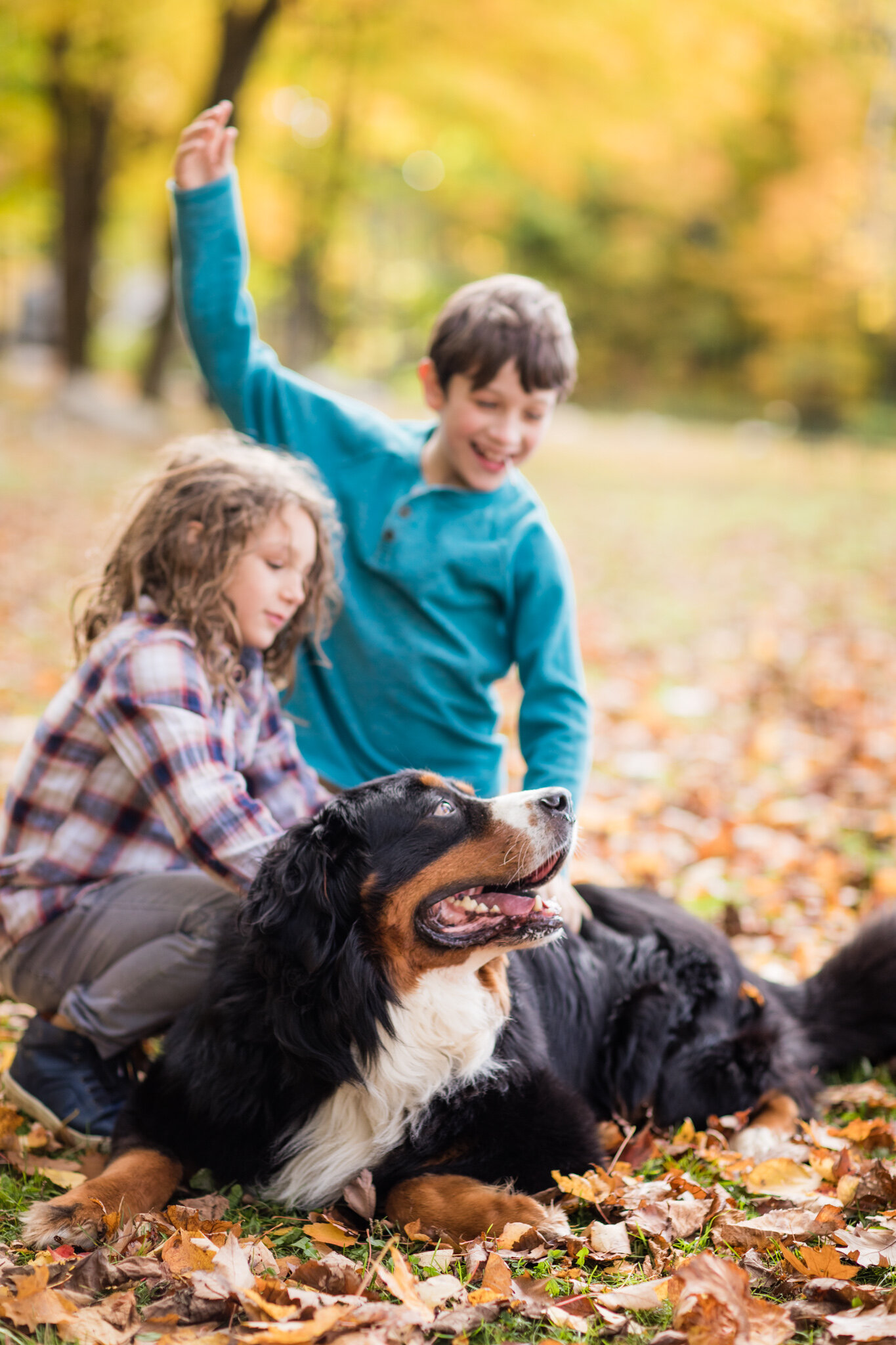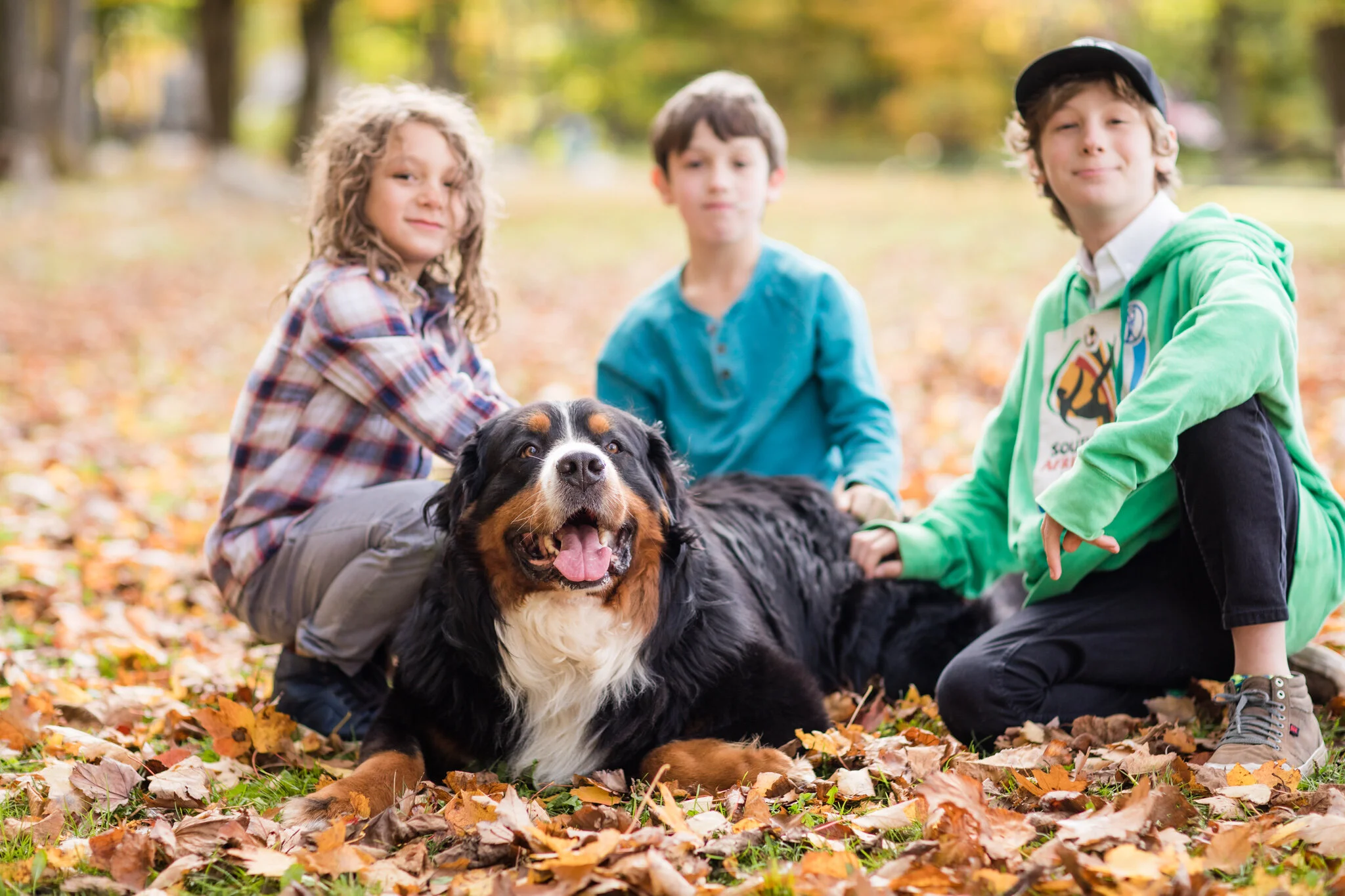Helping a Sensitive and Shy Boy Blossom with a Puppy from Stokeshire Designer Doodles
Does your gentle, reserved little boy dream of a canine best friend but seem hesitant to come out of his shell? You’re certainly not alone. Many parents hope to boost their sons’ self-confidence and social skills, yet aren’t sure where to begin. The good news? A puppy could be the key to helping your child come out of his shell. Studies show that dogs offer emotional support, enhance confidence, and improve social abilities—all while showering your family with unconditional love.
Reading Boys Adrift by Dr. Leonard Sax profoundly shaped our perspective on raising sons. It highlighted the importance of purposeful engagement, real-world challenges, and the critical role of adult mentorship in nurturing a boy’s sense of identity and responsibility. We realized how factors like excessive screen time and lack of hands-on experiences can dampen a boy’s natural curiosity and confidence. Now, we focus on encouraging outdoor adventures, fostering meaningful conversations, and ensuring our sons feel both supported and challenged. By blending these insights with our family’s love for pets—and our commitment to caring for the well-being of our kids—we’ve created a nurturing environment where our boys can thrive, explore, and grow into compassionate, resilient young men.
Here at Stokeshire Designer Doodles, our puppies are especially prized for their warm personalities, intelligence, and family-friendly traits. In this post, we’ll uncover how the bond between a boy and his dog can be life-changing, share tips on introducing a puppy to your household, and showcase real success stories.
The Benefits of Pet Companionship for Children
Puppies are more than fluffy balls of cuteness—they can have a major impact on a child’s emotional growth. Research finds that kids who grow up with dogs often enjoy higher self-esteem, greater empathy, and reduced anxiety.
Here’s how a dog can help a shy or sensitive boy:
Building Confidence: Taking care of a puppy teaches responsibility and nurtures self-assurance. Tasks like feeding, walking, and training foster a sense of personal accomplishment.
Improving Social Skills: Meeting neighbors or other dog owners on walks creates natural opportunities for interaction and conversation.
Providing Emotional Support: Dogs don’t judge—they’re always ready to offer comfort and companionship, making them a safe confidant for children. Pets provide unconditional love and support, which can significantly boost a child's self-esteem and emotional well-being (McConnell et al., 2011; Purewal et al., 2017).
Picture your son blossoming with a loyal and supportive companion by his side. It’s an incredible gift.
The Unique Bond Between Boys and Their Dogs
For those who have never read Where the Red Fern Grows, there’s something magical about the connection between a boy and his pup. For a child who’s naturally quiet or sensitive, the relationship can be especially transformative. Dogs are unwaveringly loyal, intuitive, and empathetic, which helps shy children feel understood and valued.
Talking to a dog, practicing conversations, or simply running around in the backyard can help anxious boys ease out of their comfort zone. These small daily moments build the foundation of a powerful friendship—one that can open your son’s world to new possibilities.
Pets provide unconditional love and support, which can significantly boost a child's self-esteem and emotional well-being (McConnell et al., 2011; Purewal et al., 2017).
Meet Stokeshire Designer Doodles
If you’re thinking of bringing a puppy into your family, Stokeshire Designer Doodles is an excellent place to begin your search. Our dogs are renowned for their sweet dispositions, trainability, and suitability for households with children. We have ten!
Here’s what makes our Doodles so special:
“Hypoallergenic” Coats: Minimal shedding and hypoallergenic qualities help keep your home cleaner and more comfortable for everyone.
Friendly Disposition: Doodles are affectionate and loyal—fantastic qualities for a child’s first pet.
High Intelligence: They’re eager to please, making training sessions smoother and more enjoyable.
Sociable Nature: Stokeshire Doodles are known for their love of people and other animals, fitting right into the bustling energy of a lively family.
When you welcome a Stokeshire Designer Doodle into your home, you’re not just adopting a puppy—you’re gaining a faithful, loving companion.
Preparing Your Home and Family for a Puppy
Bringing a new puppy home should be an exciting and enriching experience. Here’s how to set the stage for success:
Puppy-Proof Your Space: Move or secure anything dangerous or chewable, such as electrical cords or small toys.
Set Up a Routine: Dogs thrive on structure, so plan regular times for meals, walks, and play.
Teach Responsibility: Walk your son through simple tasks like feeding, grooming, and cleanup to help him understand his new role as a caretaker.
Gather Essentials: A crate, leash, food, and a few engaging toys will make your puppy feel welcome right away.
The “Matchmaking” Process: Choosing the Right Puppy
Every puppy has its own personality. The key is finding one that fits seamlessly into your family dynamic. Consider the puppy’s energy level, temperament, and how well they adapt to your everyday routine.
Our team at Stokeshire Designer Doodles takes pride in helping families find the perfect match. Whether your son needs a gentle cuddle buddy or a lively playmate, we work closely with you to ensure your new pup is just right.
Bringing Home Your Puppy: The First Few Weeks
The initial weeks are crucial for building a strong bond with your puppy and helping them adjust to their new surroundings. Keep these tips in mind:
Introduce Slowly: Allow your puppy to explore at their own pace, sniffing around and learning the lay of the land.
Set Boundaries: Designate specific areas for sleeping, playing, and resting.
Start Basic Training: Simple commands like “sit” or “stay” are great to begin with, especially for Doodles who love to learn.
Encourage Bonding: Involve your child in daily care so he gains confidence and feels closer to his new best friend.
Activities for Boys and Their Doodles
Watching your son grow alongside his puppy is one of the most rewarding parts of pet ownership. Here are a few activities to help foster their bond:
Outdoor Adventures: Stroll around the neighborhood, venture onto hiking trails, or play fetch in the yard. Engaging in outdoor activities with a dog not only promotes physical health but also provides opportunities for social interaction (Wells, 2009; Fine, 2015).
Training Sessions: Teaching fun tricks like “high-five” or “roll over” keeps both boy and dog happily engaged, fostering a sense of accomplishment and responsibility (Katcher, Reid, & Rist, 1984; Serpell, 2017).
Reading Time: Encouraging your child to read stories aloud to the puppy not only boosts their confidence but also enhances their literacy skills in a supportive environment (Morsani, 2012; McConnell et al., 2011).
Puppy Playdates: Socializing with other dogs—and their owners—builds confidence for both the puppy and your son.
These shared moments don’t just create cherished memories—they also teach invaluable lessons in responsibility and empathy. Caring for a puppy teaches children important life skills such as responsibility and empathy (Katcher, Reid, & Rist, 1984).
Transform Your Son’s Life with Puppy Love
A dog is so much more than a household pet—it’s a catalyst for growth, love, and adventure. For a shy or sensitive boy, a Stokeshire Designer Doodle can spark newfound confidence, teach invaluable life lessons, and fill your home with boundless affection.
Ready to see your son blossom? Stokeshire Designer Doodles is here to guide you every step of the way, from choosing the perfect pup to easing them into your family. Contact us today to learn how our Doodles can make a wonderful difference in your child’s life.
References
Fine, A. H. (2015). Handbook on animal-assisted therapy: Foundations and guidelines for animal-assisted interventions. Academic Press.
Friedmann, E., & Son, H. (2009). The human-companion animal bond: How humans benefit. In Handbook on animal-assisted therapy: Theoretical foundations and guidelines for practice (pp. 13–30). Academic Press. https://doi.org/10.1016/B978-012374915-5.50002-7
Katcher, A. H., Reid, G., & Rist, E. (1984). The Pet Connection: Pets as a conduit for family communication. Purdue University Press.
Morsani, M. (2012). Animals and children: Using pets and classroom animals to enhance literacy. Heinemann.
McConnell, A. R., Brown, C. M., Shoda, T. M., Stayton, L. E., & Martin, C. E. (2011). Friends with benefits: On the positive consequences of pet ownership. Journal of Personality and Social Psychology, 101(6), 1239–1252. https://doi.org/10.1037/a0024506
Purewal, R., Christley, R., Kordas, K., Joinson, C., Meints, K., Gee, N., & Westgarth, C. (2017). Companion Animals and Child/Adolescent Development: A Systematic Review of the Evidence. International Journal of Environmental Research and Public Health, 14(3), 234. https://doi.org/10.3390/ijerph14030234
Purewal, R., Christley, R., Kordas, K., & van Heezik, Y. (2017). Companion animals and child/adolescent development in the context of family systems: A scoping review. Society & Animals, 25(4), 381–398. https://doi.org/10.1163/15685317-02504009
Sax, L. J. (2013). Boys adrift: The five factors driving the growing epidemic of unmotivated boys and underachieving young men. Atria Books.
Serpell, J. A. (2017). The domestic dog: Its evolution, behavior and interactions with people. Cambridge University Press.
Wells, D. L. (2009). The effects of animals on human health and well-being. Journal of Social Issues, 65(3), 523–543. https://doi.org/10.1111/j.1540-4560.2009.01630.x





